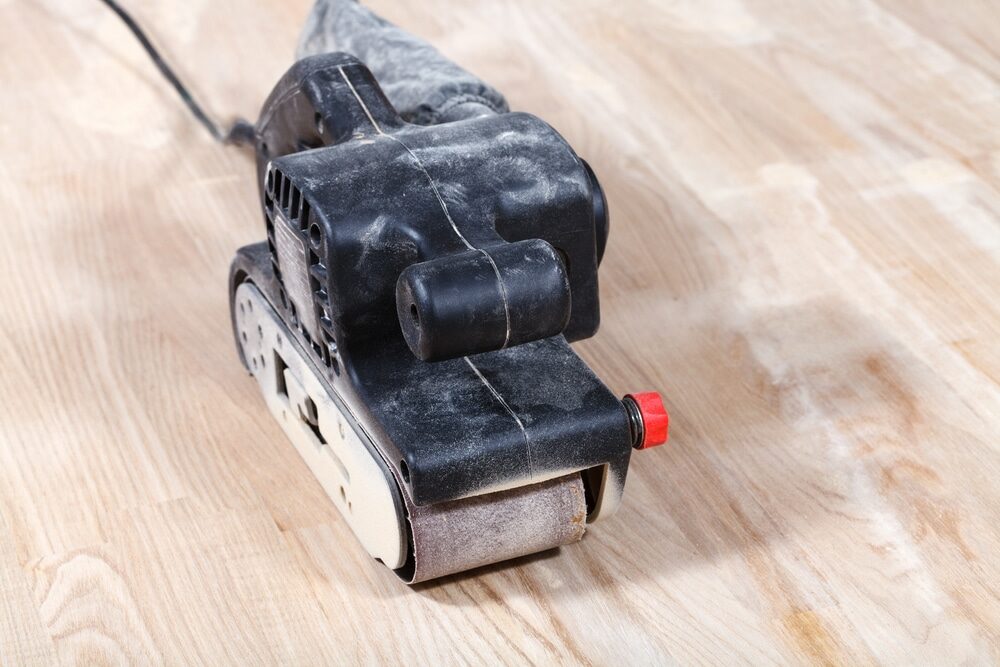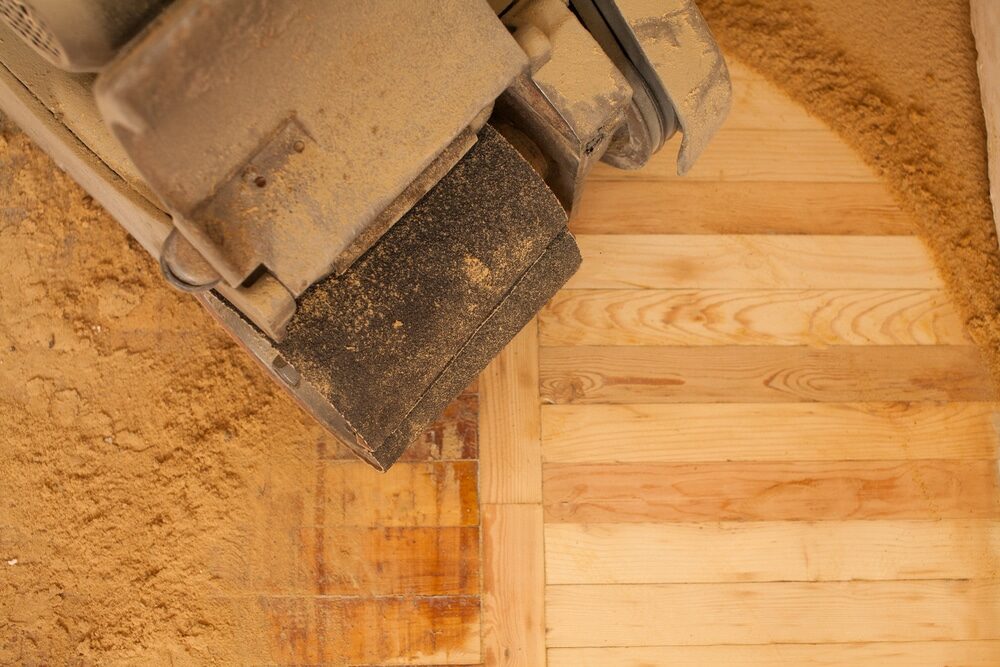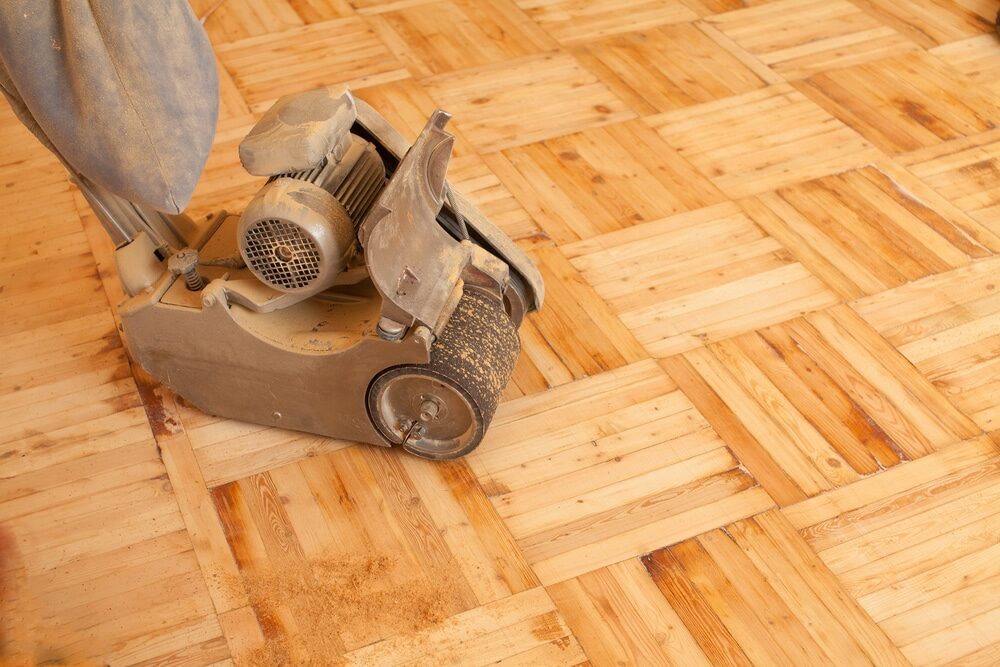London:
Nationwide:
Laying Linoleum: A Complete Guide to Installing and Maintaining Stylish Lino Floors
Posted on December 5, 2023
Linoleum Flooring
Laying Linoleum Flooring: Expert Guide to Installation & Maintenance | Stylish Lino Floors
Laying linoleum Flooring a timeless yet often overlooked flooring option that has been gracing homes for over a century. Linoleum, commonly referred to as “lino,” is celebrated for its durability, eco-friendliness, and versatile design possibilities. In this guide, we’ll delve into everything you need to know about this stylish and sustainable flooring choice. Linoleum flooring offers a unique blend of practicality and aesthetic appeal. It’s made from natural materials like linseed oil, cork dust, and wood flour, making it an eco-friendly choice for the environmentally conscious homeowner. Its resilience against wear and tear, coupled with its ease of Maintenance of Linoleum Flooring, makes linoleum a practical choice for various areas of the home. Whether you’re a DIY enthusiast looking to undertake a new project or simply curious about this classic flooring option, our guide will provide you with the necessary knowledge and step-by-step instructions. From selecting the right type of linoleum for your space to laying it down flawlessly and ensuring it stands the test of time, we’ve got you covered. So, let’s embark on this journey together and discover how to transform your floors with the beauty and practicality of linoleum!
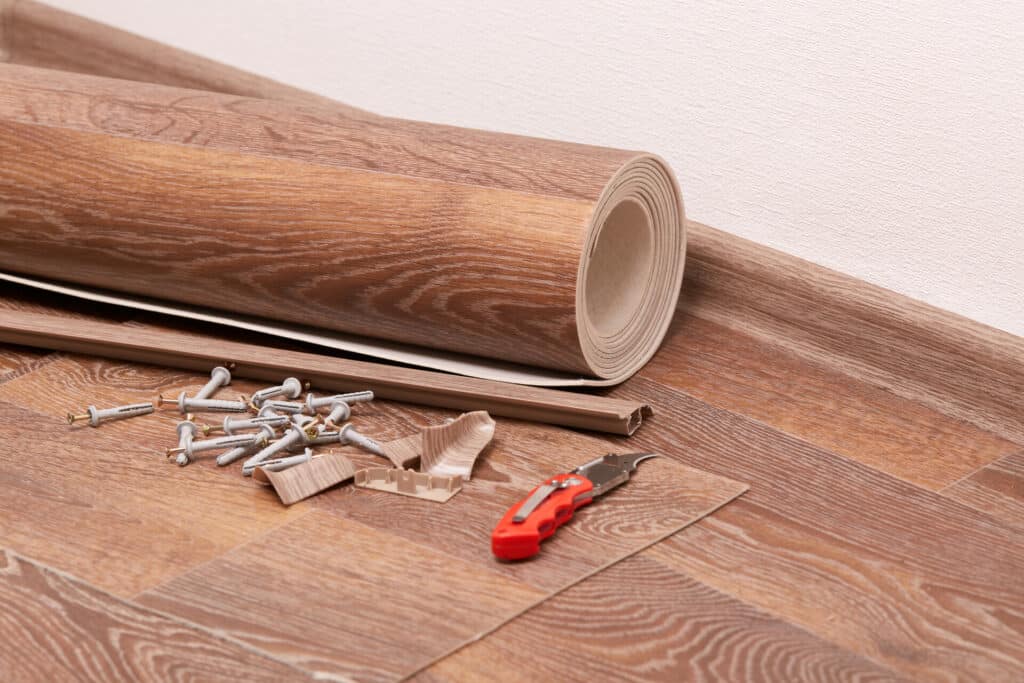
Understanding Linoleum
Linoleum flooring, often abbreviated as “lino,” is more than just a flooring choice; it’s a blend of history, craftsmanship, and environmental responsibility. This chapter aims to deepen your understanding of linoleum, exploring its rich history, composition, and the various types available on the market.
1. History of Linoleum Floors
- Origin Story: Discover how linoleum was invented in the mid-19th century and its evolution into a popular flooring choice.
- Rise, Fall, and Resurgence: Learn about the peak popularity of linoleum in the early 20th century, its decline with the advent of synthetic materials, and its recent comeback due to its eco-friendly nature.
2. Composition of Linoleum
- Natural Ingredients: Understand the unique composition of linoleum, which is primarily made from linseed oil, cork dust, wood flour, and jute backing.
- Manufacturing Process: An insight into how these natural materials are combined and processed to create durable, flexible flooring
3. Types of Linoleum
- Sheet Linoleum: Explore the traditional and most common form of linoleum, sold in rolls and ideal for large, uninterrupted areas.
- Linoleum Tiles: Discover the versatility of linoleum tiles, which are perfect for creating custom patterns and designs.
- Click-Linoleum: Learn about this newer, DIY-friendly option that allows for easy installation without adhesives.
4. Advantages of Linoleum
- Eco-Friendly: Emphasise the sustainability aspect, highlighting linoleum’s biodegradable and low-emission properties.
- Durability and Maintenance: Discuss the long lifespan of linoleum and its ease of maintenance, making it a practical choice for various settings.
- Health and Safety: Touch upon the hypoallergenic and anti-bacterial properties of linoleum, making it a safe choice for homes and public spaces.
5. Aesthetic Flexibility
- Design Options: Illustrate the wide range of colours, patterns, and styles available in linoleum, catering to different aesthetic preferences.
- Customization Possibilities: Encourage creativity by showing how linoleum can be cut and combined to create unique designs.
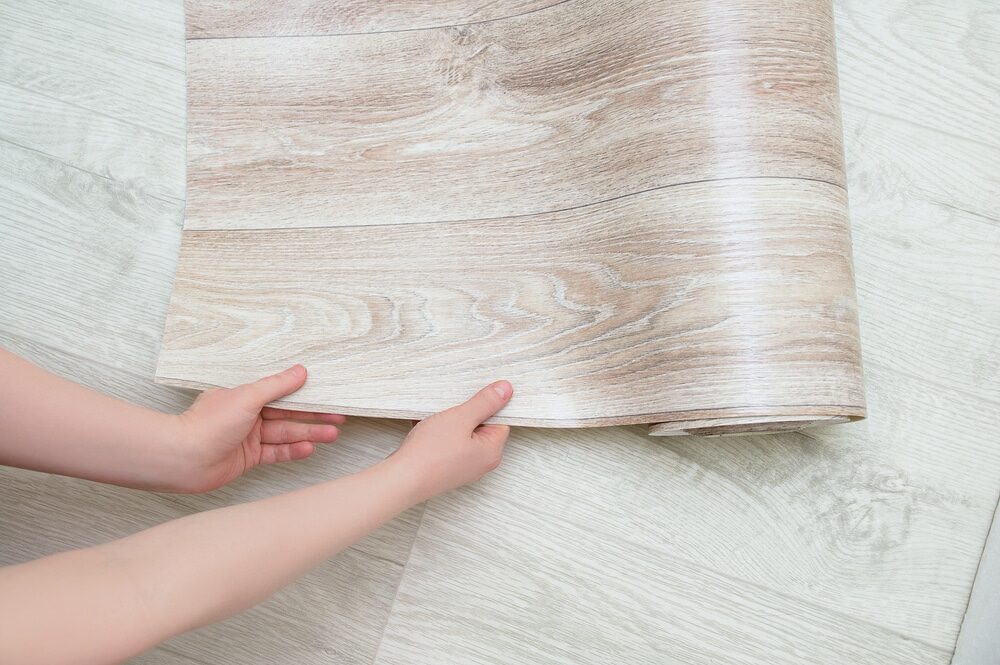
Planning Your Linoleum Installation
Embarking on a linoleum installation project requires careful planning and preparation. This chapter provides a detailed guide to help you get ready for a successful linoleum floor installation. From measuring your space to choosing the right type of linoleum and gathering the necessary tools and materials, we’ve got all the bases covered.
1. Measuring Your Space
- Basics of Floor Measurement: Learn how to accurately measure the floor area where you intend to install linoleum, ensuring you purchase the right amount of material.
- Accounting for Waste: Understand the importance of adding extra material to your calculations to account for cuts, trimming, and potential errors.
2. Choosing the Right Linoleum
- Assessing Your Needs: Discuss factors to consider when selecting linoleum, such as foot traffic, sunlight exposure, and moisture levels in the area of installation.
- Style and Aesthetics: Tips on how to choose linoleum colours and patterns that complement your home’s decor
3. Tools and materials needed
- Essential Tools: Compile a list of tools required for linoleum installation, including measuring tape, a utility knife, a notched trowel, and a roller.
- Additional Supplies: Outline other materials you’ll need, like adhesive, underlayment (if necessary), and seam sealers.
4. Preparing for Installation
- Scheduling: advice on choosing the right time for installation, considering factors like temperature and humidity.
- Preparing the Subfloor: Guidance on how to prepare your subfloor for linoleum installation, ensuring it’s clean, level, and dry.
5. Health and Safety Considerations
- Safety Gear: Emphasise the importance of using safety gear like gloves, knee pads, and eye protection during installation.
- Ventilation: Tips on ensuring proper ventilation in your workspace to avoid inhaling any fumes from adhesives or sealants
6. Budgeting and Cost Considerations
- Estimating Costs: Provide information on how to calculate the overall cost of your linoleum installation project, including materials and tools.
- Saving Tips: Offer advice on how to save money without compromising on quality, such as by looking for sales or discounts on materials.
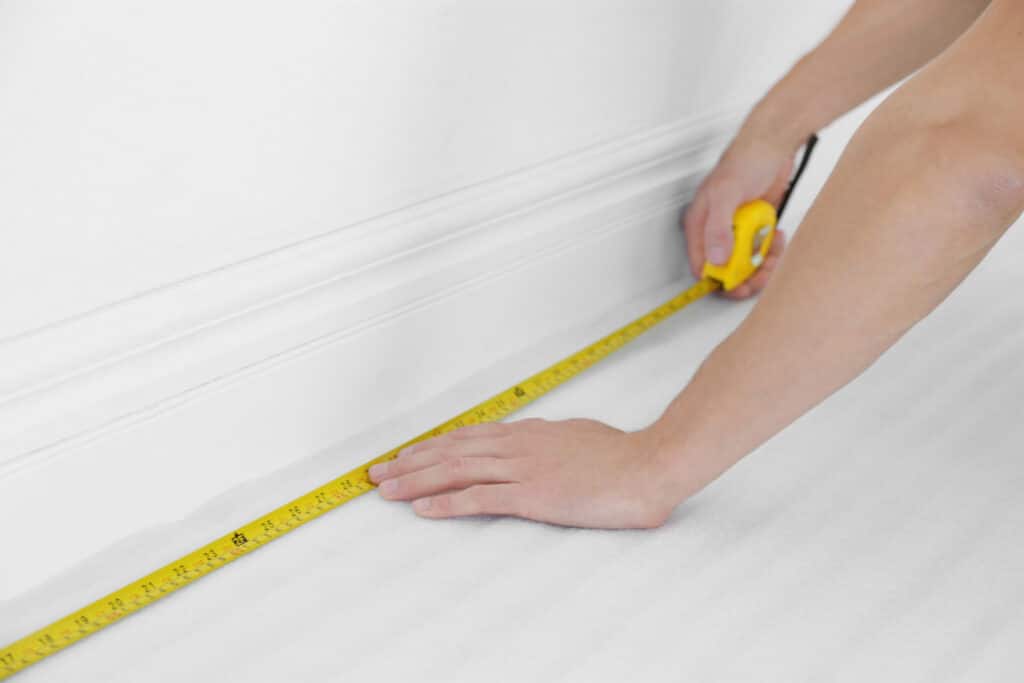
The Installation Process
Installing linoleum can be a rewarding DIY project if done correctly. This chapter will guide you through the step-by-step process of laying linoleum flooring, ensuring a professional-looking finish.
1. Overview of the Installation Process
- Introduction: Briefly explain the importance of following the steps carefully to ensure a successful linoleum floor installation.
2. Lay Out the Linoleum
- Unrolling the Linoleum: Instructions on how to properly unroll and lay out the linoleum in the room, allowing for adjustments and acclimation.
- Template Making: A Guide to Creating a Template for Tricky Areas or Intact Room Shapes
3. Cutting the Linoleum
- Measuring and Marking: Tips on how to measure and mark the linoleum accurately for cutting
- Cutting Techniques: Detailed guidance on how to cut linoleum using a utility knife or other appropriate tools
4. Applying Adhesive
- Choosing the Right Adhesive: Advice on Selecting the Appropriate Adhesive for Your Type of Linoleum and Subfloor
- Application Technique: Step-by-step instructions on how to evenly spread adhesive on the subfloor.
5. Laying the Linoleum
- Positioning: Techniques for properly aligning and laying the linoleum on the adhesive-covered floor
- Rolling the Floor: Instructions on using a floor roller to eliminate air bubbles and ensure a firm bond between the linoleum and subfloor.
6. Sealing and Trimming
- Trimming Excess Material: A Guide to Trimming Any Excess Linoleum for a Neat Finish
- Sealing Seams: If applicable, instructions on how to seal the seams between linoleum sheets or tiles to prevent water damage and lifting
7. Installing Linoleum Tiles or Click-Linoleum
- Specific Instructions for Tiles: Detailed steps for laying linoleum tiles, focusing on alignment and spacing
- Click-Linoleum Installation: A Guide for Installing Click-Linoleum, Emphasising the Importance of the Locking Mechanism and Proper Placement
8. Finishing Touches
- Reinstalling Baseboards and Trim: Tips on reinstalling baseboards or trim after the installation
- Cleaning Up: Advice on cleaning the newly installed floor and disposing of installation debris
9. Post-Installation Tips
- Initial Maintenance: Instructions on how to care for your new linoleum floor in the first few days after installation
- Avoiding Damage: Precautions to prevent damage to the linoleum during the curing period
By following these detailed steps, you can confidently install your linoleum flooring, ensuring a beautiful and long-lasting surface in your home.
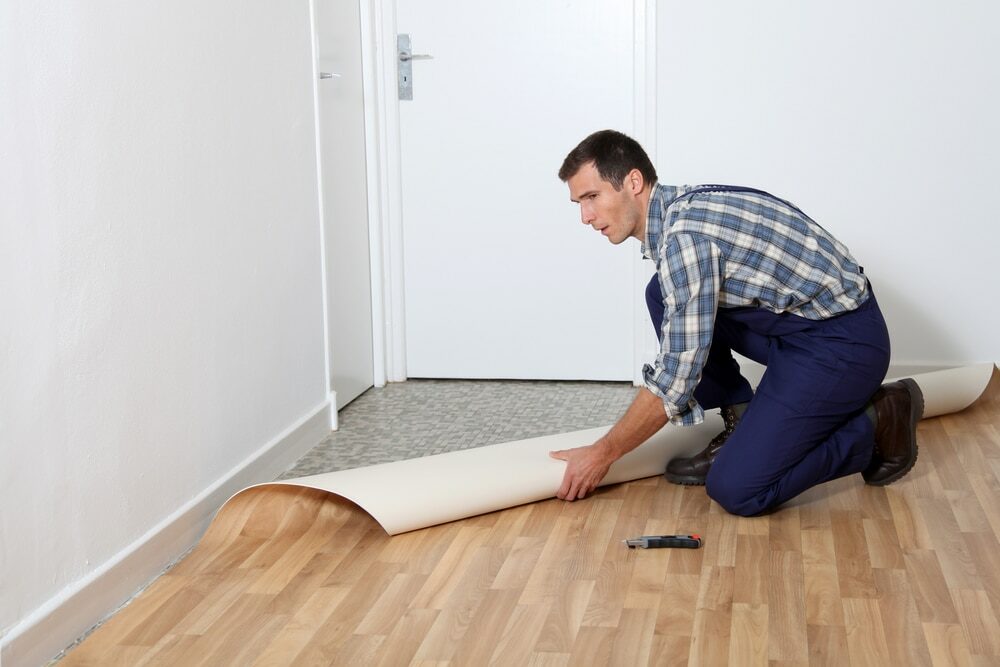
Maintenance and care
Proper maintenance and care are essential to prolonging the life and preserving the appearance of your linoleum flooring. This chapter provides practical advice on how to keep your linoleum floors looking their best through regular cleaning, dealing with stains, and ensuring long-term maintenance.
1. Daily and Weekly Cleaning Tips
- Sweeping and Vacuuming: Guidelines on regular sweeping or vacuuming to remove dirt and dust
- Mopping: recommendations for the type of mop and cleaning solutions to use, emphasising the need to avoid excess water.
2. Dealing with stains and scratches
- Immediate Action: Emphasise the importance of promptly addressing spills to prevent staining.
- Specific Stain Removal: Tips for removing common types of stains such as food, ink, or oil.
- Managing Scratches: Advice on minimising the appearance of scratches and preventing further damage
3. Long-Term Maintenance
- Periodic Deep Cleaning: Instructions on how to conduct a thorough cleaning periodically
- Refinishing and Sealing: Discuss when and how to refinish and seal linoleum floors to rejuvenate their appearance.
4. Preventing damage
- Furniture and Appliance Movement: Tips on safely moving heavy items to avoid gouging or tearing the linoleum
- Use of Rugs and Mats: The importance of using rugs and mats in high-traffic areas to reduce wear
5. Addressing Fading and Discoloration
- Sunlight Exposure: Advice on protecting linoleum from excessive sunlight to prevent fading
- Treating Discoloration: Strategies for Dealing with Discoloured Patches and Restoring the Original Colour
6. Eco-Friendly Cleaning Practices
- Natural Cleaning Solutions: Recommendations for eco-friendly and homemade cleaning solutions that are safe for linoleum floors
- Avoiding Harsh Chemicals: A caution against using harsh or abrasive cleaners that can damage linoleum
7. Linoleum Flooring in Special Environments
- High Moisture Areas: Special care instructions for linoleum floors in bathrooms or kitchens
- Commercial Spaces: Additional maintenance tips for linoleum flooring in high-traffic commercial areas
8. Troubleshooting Common Issues
- Addressing Lifted Edges or Bubbles: Solutions for repairing minor issues like lifted edges or air bubbles under the linoleum
- Professional Assistance: Guidance on when to seek professional help for major repairs or replacements
With these maintenance and care tips, your linoleum flooring will continue to be a durable and attractive feature in your home, providing comfort and style for years to come.
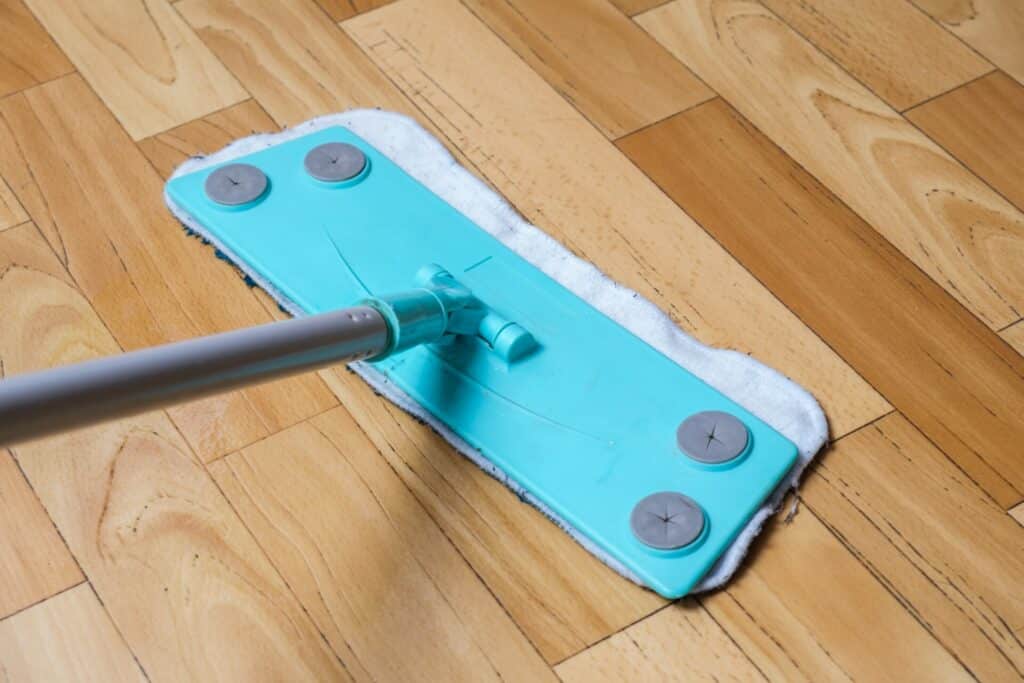
Common Mistakes to Avoid
Installing and maintaining linoleum flooring can be straightforward, but certain common mistakes can lead to less than desirable results. This chapter highlights these pitfalls and provides advice on how to avoid them, ensuring a successful linoleum flooring experience from start to finish.
1. Installation Pitfalls
- Inadequate Subfloor Preparation: Emphasise the importance of properly preparing the subfloor, as failing to do so can lead to uneven surfaces and reduced flooring longevity.
- Incorrect Measurement and Cutting: Tips to avoid mistakes in measuring and cutting, which can result in wastage of material or inadequate coverage
- Using the Wrong Adhesive: Discuss the consequences of using incorrect or low-quality adhesive and how to choose the right one for linoleum.
- Rushing the Installation: Caution against rushing through the installation process, which can lead to poor alignment and finishing.
2. Maintenance Don’ts
- Over-wetting the Floor: Warn against using too much water while cleaning, as it can seep into seams and damage the subfloor.
- Neglecting Regular Cleaning: Remind yourself of the risks associated with infrequent cleaning, like the buildup of dirt and grime that can degrade the floor’s appearance and integrity.
- Using Harsh Chemicals: Caution against the use of harsh chemicals that can strip away the finish and damage the linoleum.
3. Incorrect Repair Techniques
- DIY Repairs Without Proper Knowledge: Advise against attempting repairs without understanding the proper techniques, as it can lead to further damage.
- Ignoring Small Issues: Highlight the importance of addressing minor issues promptly before they escalate into major problems.
4. Misconceptions About Linoleum Care
- Confusing Linoleum with Vinyl: Clarify the differences between linoleum and vinyl, as they require different care and maintenance approaches.
- Underestimating Longevity: Counter the misconception that linoleum is not durable by explaining proper maintenance practices that extend its life.
5. Underestimating environmental factors
- Not Accounting for Temperature and Humidity: Explain how environmental factors can affect linoleum installation and longevity and how to mitigate these effects.
- Failing to Protect from Sunlight: Tips on Protecting Linoleum Floors from Excessive Sunlight to Prevent Fading and Warping
6. Ignoring Manufacturer’s Instructions
- Importance of Following Guidelines: Stress the importance of adhering to the manufacturer’s instructions for both installation and maintenance.
By being aware of and avoiding these common mistakes, you can ensure a smoother installation process and maintain the beauty and functionality of your linoleum flooring for years to come.

Sustainability and Eco-Friendly Aspects
In the current age where environmental consciousness is paramount, linoleum flooring stands out as a beacon of sustainability and eco-friendliness. This chapter will delve into the green credentials of linoleum, exploring how it not only contributes to a more sustainable world but also benefits the health and well-being of those who use it.
1. Natural and Renewable Materials
- Composition: Detail the natural ingredients that make up linoleum, such as linseed oil, cork dust, wood flour, and rosin, highlighting their renewable nature.
- Source Sustainability: Discuss the sustainable sourcing practices for these materials, ensuring minimal impact on the environment.
2. Low Environmental Impact
- Manufacturing Process: shed light on the energy-efficient manufacturing processes of linoleum that reduce its carbon footprint.
- Biodegradability: Emphasise the biodegradable nature of linoleum, which contributes to less waste in landfills.
3. Indoor Air Quality and Health Benefits
- Low VOC Emissions: Explain how linoleum’s low volatile organic compound (VOC) emissions contribute to better indoor air quality, making it a healthier choice for homes and businesses.
- Anti-bacterial Properties: Highlight the natural anti-bacterial properties of linoleum, which make it a hygienic flooring option.
4. Longevity and Durability
- Lifecycle: Discuss the long lifespan of linoleum, which reduces the need for frequent replacements and thus lessens the environmental impact over time.
- Recyclability: Talk about the recyclability of linoleum, allowing used flooring to be repurposed or recycled, further reducing its ecological footprint.
5. Energy Efficiency
- Insulation Properties: Describe how linoleum’s natural insulating properties can contribute to energy efficiency in homes and buildings.
6. Certifications and Green Ratings
- Eco Labels: List various eco-labels and certifications that linoleum flooring may receive, like the GreenGuard or Blue Angel, which vouch for its environmental friendliness.
7. Eco-Friendly Maintenance
- Green Cleaning: Provide tips on maintaining linoleum flooring using eco-friendly cleaning methods and products, further enhancing its sustainability profile.
8. Contribution to Green Buildings
- LEED Certification: Explain how using linoleum can contribute to a building’s LEED certification, a widely recognised green building rating system.

Conclusion
As we wrap up Linoleum flooring, with its rich history, eco-friendliness, and versatility, offers a unique and sustainable option for both the DIY enthusiast and the conscious homeowner. We started by exploring the history and composition of linoleum, understanding its natural ingredients and the diverse types available on the market. This background set the stage for the practical aspects of planning and preparing for linoleum installation, where we emphasised the importance of accurate measurements, selecting the right type of linoleum, and preparing the subfloor thoroughly. The heart of this guide, the installation process, provides you with detailed, step-by-step instructions to ensure a smooth and successful installation. By following these guidelines, you can achieve a professional-looking finish, enhancing the aesthetic appeal and functionality of your space. Maintenance and care are critical to preserving the beauty and longevity of your linoleum flooring. We covered the essentials of regular cleaning, dealing with stains and scratches, and the importance of long-term Maintenance of Linoleum Floors. These practices not only keep your floor looking its best but also contribute to a healthier and more sustainable living environment. Lastly, we discussed common mistakes to avoid during installation and maintenance. This knowledge helps you sidestep potential pitfalls, ensuring a hassle-free experience and prolonging the life of your flooring.

Sanding
We provide virtually dust-free sanding with our continuous belt machinery with mobile extraction units, giving you a safer environment for your family.
Oiling
This organic finish not only adds beauty to your home but also has exceptional water-repellent characteristics, making it easier to clean and maintain.
Waxing
This natural floor finish offers the softest and most mellow appearance – and leaves your floor able to breath.
Buffing
Using soft buffing machines (and hand-polishing where required) will bring a wonderful sheen to your newly-finished floor.
Repairs
We offer a full assessment of your wooden floors to determine what repairs are needed to provide the perfect working surface for the later stages of sanding, staining and sealing.
Restoration
We offer a comprehensive restoration process designed to address floors that are improperly fitted or damaged over time through wear and tear.
Request a fixed price quote for your wood floor restoration now
Simply enter your postcode below to get started.
Services
Wood Floor Sanding Wood Floor Restoration Wood Floor Scratch Repair Squeaky Wood Floor Repair Parquet Floor Sanding Parquet Floor Restoration Commercial Floor Sanding Church Floor Sanding Community Centre Floor Sanding School Floor Sanding Gap Filling Gap Filling with ResinCopyright © Mr Sander®
Privacy & Cookies Terms & Conditions Complaints Procedure Cancellation Rights Sitemap